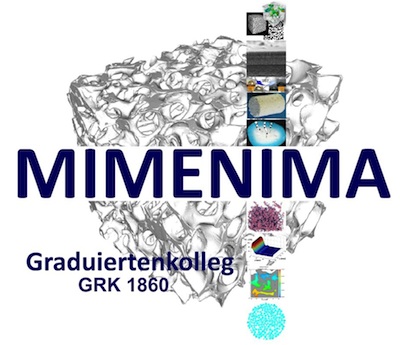
The University of Bremen (Germany) today announced that it has €4.5 million in funding for a project to tailor porous advanced ceramics for applications in energy, environmental, chemical engineering and space technology
The project is called MIMENIMA—an acronym for micro-, meso- and macroporous nonmetallic materials.
According to a university news release, “Eight interdisciplinary research groups are involved in this initiative and we are very excited to go significantly beyond-the-state-of-art,” says Kurosch Rezwan, the spokesperson of the MIMENIMA research training group (RTG) and a professor of advanced ceramics at the university. Rezwan is a member of ACerS and is affiliated with the Society’s Engineering Ceramics Division.
The scope of the project includes:
- Materials Development
- Functional, porous ceramics for biotechnological applications
- Adjustment of polymer-derived ceramics for the transport of cryogenic liquid
- Monolithic catalysts of porous rare earth oxides (REO)
- Process Analysis
- NMR methods for the characterisation of mass transport in porous materials
- Structural characterization of mesoporous layers using light scattering
- Basic Research Experiments For Mass Transport In Porous Materials
- Deep bed filtration in real porous structures – Combination of µCT and NMR
- Investigation of dielectrophoretic effects in porous structures
- Modeling And Simulation
- Mechanical properties of porous ceramics: combination of in-situ X-ray tomography and finite element simulation to develop micro-structurally based failure criteria
- Formulation of multiple fluid-fluid dispersions by micro-membranes (premix encapsulation)
- Special Applications
- Application of porous ceramics for the handling of cryogenic media in space
- Monolithic catalysts of graded porosity
The school says the RTG will be using tailoring techniques developed in Bremen over the past years. Nevertheless, the release notes, “The characterization of transport processes of the opaque three‐dimensional actual structures requires imperatively the establishment of novel analytical methods.
MIMENIMA will be using nuclear magnetic resonance for spatial analysis of the liquid phase distribution and dynamic flow processes, and X‐ray tomography for quantitative analysis of the ceramic structure. After material conditioning, the RTG predicts that the systematic combination of NMR and XRT is the second major integrated focus of the research project.
A number of new research opportunities are connected to the MIMENIMA effort. The RTG says it is looking for at least 11 “excellent PhD candidates [from] all over the world.”
MIMENIMA is one of 23 new RTGs that the DFG (the German Research Foundation) announced it was funding last November. The DFG already was funding 226 RTG, including 48 international groups.
